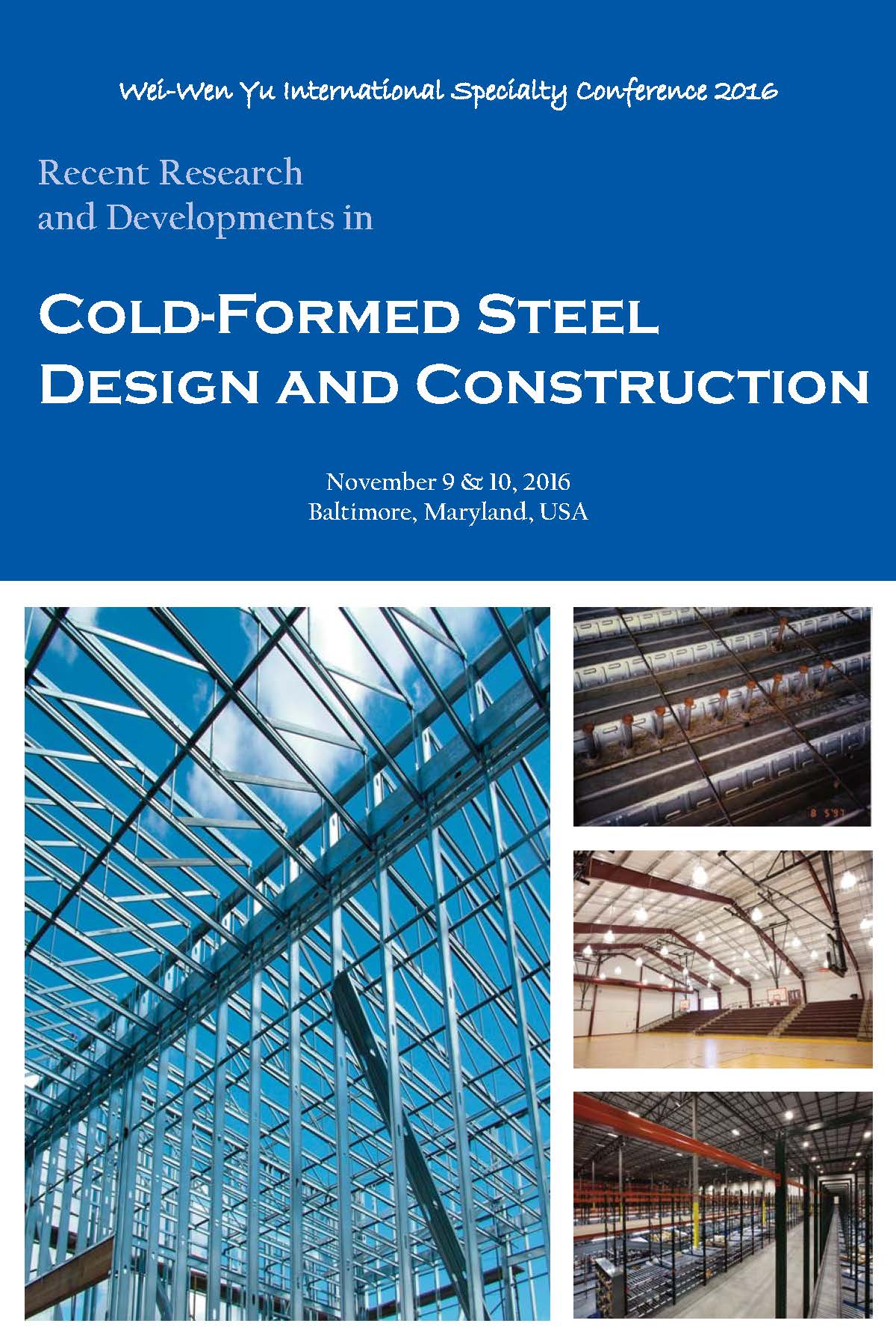Session Dates
09 Nov 2016
Keywords and Phrases
Press braking; Welding process; Residual stress; Numerical solution; Laboratory test
Abstract
Press braking is a cold forming operation used to fold the angle along the flat sheet between the top punch and bottom die. The residual stress will be induced in this process as a result of plastic deformation. In the welding process, a dynamic thermal cycle is introduced to generate a non-uniformly temperature distribution on the heat affected zone (HAZ), and the residual stress also occurs in the process as a result of uneven cooling along the welding bead. The existence of residual stress can superimpose onto the external loadings to affect the stiffness and load resistance capacity of the structures. Therefore, a comprehensive understanding of the distribution and the impact of residual stress on the performance of cold-formed sections (CFS) is essential.
The primary motivation of this paper is to provide a numerical solution for exploring the effect of press braking and welding residual stress on CFS sigma beams. Modelling methods were validated against the published experimental data and the influence of inputs to the model was discussed by parametrical studies. Based on the laboratory test results, the effect of residual stress on sigma beams was further investigated. It is found that the residual stress on the corner region will increase the failure load of sigma beams while the residual stress on the flat portion will decrease the failure load.
Department(s)
Civil, Architectural and Environmental Engineering
Research Center/Lab(s)
Wei-Wen Yu Center for Cold-Formed Steel Structures
Meeting Name
International Specialty Conference on Cold-Formed Steel Structures 2016
Publisher
Missouri University of Science and Technology
Document Version
Final Version
Rights
© 2016 Missouri University of Science and Technology, All rights reserved.
Document Type
Article - Conference proceedings
File Type
text
Language
English
Recommended Citation
Wang, Feiliang and Yang, Jian, "Finite Element Investigations of the Effect of Residual Stress in Cold-Formed Sigma Beams" (2016). CCFSS Proceedings of International Specialty Conference on Cold-Formed Steel Structures (1971 - 2018). 3.
https://scholarsmine.mst.edu/isccss/23iccfss/session3/3
Finite Element Investigations of the Effect of Residual Stress in Cold-Formed Sigma Beams
Press braking is a cold forming operation used to fold the angle along the flat sheet between the top punch and bottom die. The residual stress will be induced in this process as a result of plastic deformation. In the welding process, a dynamic thermal cycle is introduced to generate a non-uniformly temperature distribution on the heat affected zone (HAZ), and the residual stress also occurs in the process as a result of uneven cooling along the welding bead. The existence of residual stress can superimpose onto the external loadings to affect the stiffness and load resistance capacity of the structures. Therefore, a comprehensive understanding of the distribution and the impact of residual stress on the performance of cold-formed sections (CFS) is essential.
The primary motivation of this paper is to provide a numerical solution for exploring the effect of press braking and welding residual stress on CFS sigma beams. Modelling methods were validated against the published experimental data and the influence of inputs to the model was discussed by parametrical studies. Based on the laboratory test results, the effect of residual stress on sigma beams was further investigated. It is found that the residual stress on the corner region will increase the failure load of sigma beams while the residual stress on the flat portion will decrease the failure load.



